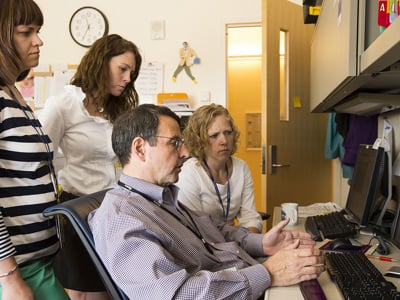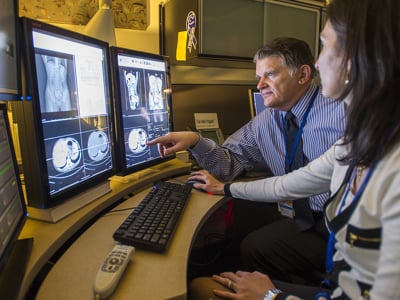- Doctors & Departments
-
Conditions & Advice
- Overview
- Conditions and Symptoms
- Symptom Checker
- Parent Resources
- The Connection Journey
- Calm A Crying Baby
- Sports Articles
- Dosage Tables
- Baby Guide
-
Your Visit
- Overview
- Prepare for Your Visit
- Your Overnight Stay
- Send a Cheer Card
- Family and Patient Resources
- Patient Cost Estimate
- Insurance and Financial Resources
- Online Bill Pay
- Medical Records
- Policies and Procedures
- We Ask Because We Care
Click to find the locations nearest youFind locations by region
See all locations -
Community
- Overview
- Addressing the Youth Mental Health Crisis
- Calendar of Events
- Child Health Advocacy
- Community Health
- Community Partners
- Corporate Relations
- Global Health
- Patient Advocacy
- Patient Stories
- Pediatric Affiliations
- Support Children’s Colorado
- Specialty Outreach Clinics
Your Support Matters
Upcoming Events
Colorado Hospitals Substance Exposed Newborn Quality Improvement Collaborative CHoSEN Conference (Hybrid)
Monday, April 29, 2024The CHoSEN Collaborative is an effort to increase consistency in...
-
Research & Innovation
- Overview
- Pediatric Clinical Trials
- Q: Pediatric Health Advances
- Discoveries and Milestones
- Training and Internships
- Academic Affiliation
- Investigator Resources
- Funding Opportunities
- Center For Innovation
- Support Our Research
- Research Areas

It starts with a Q:
For the latest cutting-edge research, innovative collaborations and remarkable discoveries in child health, read stories from across all our areas of study in Q: Advances and Answers in Pediatric Health.


Seizure Diagnosis and Management in Children
Written by Charuta Joshi, MD
To the lay public, seizures typically evoke a visual picture of a person shaking uncontrollably sometimes with a change in color and frothing at the mouth: overall, a near-death experience. Add to that the possibility of this happening to a young and developing child, and it is sure to cause significant parental concern as well as physician concern. Is this likely to happen again? What is the chance of brain damage because of either repeated overt seizures or possible missed seizures? What can I do to prevent another episode? What investigations can I perform before the patient is seen by the neurologist?
After a single seizure, what is the chance that it will happen again?
First, it's important to establish that the event of concern is indeed a seizure. This can only happen after a very detailed clinical history, which establishes that the event happens suddenly, disrupts normal behavior, has an onset, evolution and offset. Most seizures last 1 to 2 minutes in duration. Remember that every shake or stare is not a seizure.
In one of the first seizure clinics, it was found that 30% of patients had episodes that were not seizures (this would include paroxysmal events like behavioral spells of inattention, syncope, stereotypies, etc.)1. Another 30% had episodes where previous seizures predated the first recognized seizure and in 30%, this was truly the first event.
If the patient had a true unprovoked seizure (meaning there was no provocation factor like fever, abnormal electrolytes, brain infection, etc.), the chance that the patient can have another event is anywhere from 14 to 60% according to the American Academy of Neurology practice parameter on treatment of a child with a first unprovoked seizure. Patients who have an abnormal electroencephalogram (EEG) are more likely to have a subsequent event compared to patients that have a normal EEG. Additional risk factors that increase risk for future seizures include a remote insult to the brain, seizures occurring in sleep or postictal Todds paresis.
Typically, seizures do not change characteristics from event to event. This means it's unlikely the patient might have significant jerking of all four extremities one day, followed by episodes of staring or laughing out of context the next day, followed by episodes of rage attacks some other time. It's more likely the patient might initially appear to stare or twitch one part of their body, and then progress into shaking of one extremity or the other.
It's important to document the patient's behavior after the event of concern. A seizure is the clinical manifestation of an abnormal, abrupt, purposeless electrical discharge in the brain. Therefore, one expects that after such a discharge, the behavior of the patient should not come back to normal immediately. It is always helpful to review home videos that parents or caretakers have of suspicious events.
Seizures do not respect night or daytime. Therefore, episodes of concern that happen circumstantially only during narrow times or around certain activities alone are less likely to be seizures.
If the patient has a second unprovoked event, then the chance that the seizures will continue happening is 80 to 90%. Providers should take steps to prevent future episodes by starting the patient on preventive or prophylactic anti-seizure medications.
Can seizures cause brain damage?
Given the significant redundancy of the brain and the developmental potential of a growing child, a single seizure that is not prolonged (meaning not greater than 30 minutes) would be unlikely to cause any clinically discernible developmental problems. In many cohort studies that looked prospectively at seizures, researchers found that even after 8 to 10 events, there was no evidence of long-term or established brain damage2. However, given the pernicious nature of a generalized tonic-clonic seizure, it's important to establish that the parents know what to do during a seizure and discuss seizure first aid and seizure safety. Refer patients and their families to The Epilepsy Foundation of Colorado for robust resources.
Since most seizures last 1 to 2 minutes, it's generally recommended that any seizure lasting up to five minutes should be considered an episode of impending status epilepticus. Therefore, our experts at the Neuroscience Institute advise parents to administer rescue medications or contact 911 after this duration if they do not have any rescue medications.
We encourage primary care providers (PCPs) to discuss seizure safety and first aid with the family and to provide a seizure rescue medication. Commonly used seizure rescue medicines include rectal diazepam or intranasal midazolam.
What can I do to prevent another episode?
After a single seizure, many times our team recommends holding off on starting preventive medication. However, after two or more seizures, preventive medication is recommended. In rare cases after a single seizure, if the chance of this patient having repeated seizures is very high, either due to a brain abnormality or metabolic disturbance, a neurologist might consider starting medications right away.
What investigations are warranted after a single seizure?
After a first seizure, the International League Against Epilepsy guidelines recommends obtaining baseline lab testing to include a Chem-7, to look for abnormalities – especially in glucose, sodium, magnesium and calcium – that are reversible causes of a seizure. In addition to neurological examination, a general examination is warranted to look for focal neurological signs or other signs of a brain infection.
If the patient has an unprovoked seizure without an evident reversible cause, it's recommended that the patient have an EEG to look for any abnormalities. The yield of a routine EEG records both awake and asleep states in the pediatric patient is close to 50% when it is obtained within the first 24 to 48 hours after a seizure.
It is important to stress that a routine EEG that is normal does not exclude a diagnosis of a seizure disorder since it's merely a sample in time and the yield of this test is not very high. Therefore, although an EEG could help in localizing seizure onset as well as in prognostication of future seizures, it is rarely diagnostic in and of itself. The exception is in cases of childhood absence epilepsy or in cases of infantile spasms where one expects to see hypsarrhythmia, a type of EEG pattern commonly associated with infantile spasms in the majority of infants. If an EEG is abnormal, the chance that the seizures might repeat are likely high.
What should I do if the patient has already had a few seizures by the time they report to my clinic?
When a patient has already had a few seizures by the time they report to their PCP, it is important to be able to prevent further seizures. Discussion with a neurologist about next steps and possible treatment initiation is important. The neurologist can help make a quick assessment of whether an immediate treatment plan is required or whether the patient can wait for further evaluation.
Dr. Joshi and her pediatric neurology colleagues can be reached through OneCall for consult at 720-777-3999.
Sources:
- Hamiwka, Lorie & Singh, N & Niosi, J & Wirrell, E. (2007). Diagnostic Inaccuracy in Children Referred with "First Seizure": Role for a First Seizure Clinic. Epilepsia. 48. 1062-6. 10.1111/j.1528-1167.2007.01018.x.
- Camfield C, Camfield P, Gordon K, Smith B, Dooley J. Outcome of childhood epilepsy: a population-based study with a simple predictive scoring system for those treated with medication. J Pediatr. 1993;122:861–868.
- Shinnar S, O'Dell C, Berg AT. Distribution of epilepsy syndromes in a cohort of children prospectively monitored from the time of their first unprovoked seizure. Epilepsia. 1999;40:1378–1383.



 720-777-0123
720-777-0123






